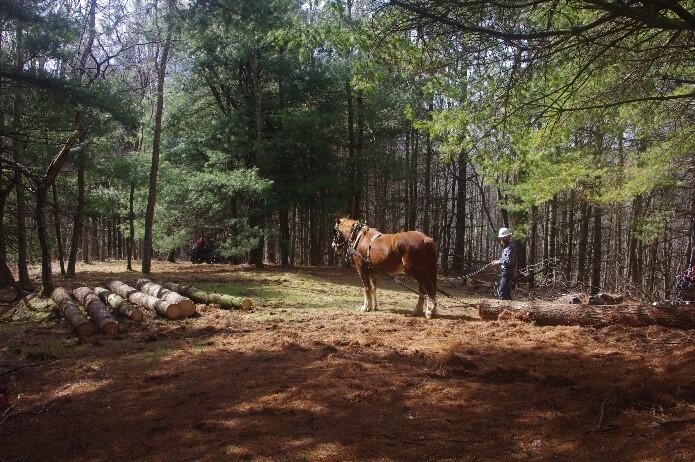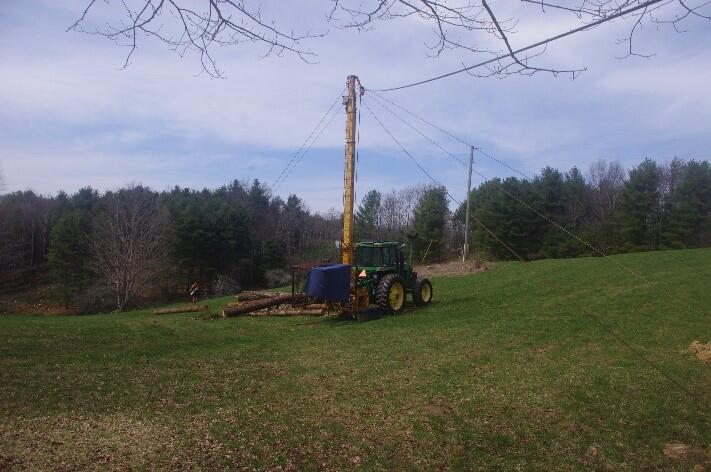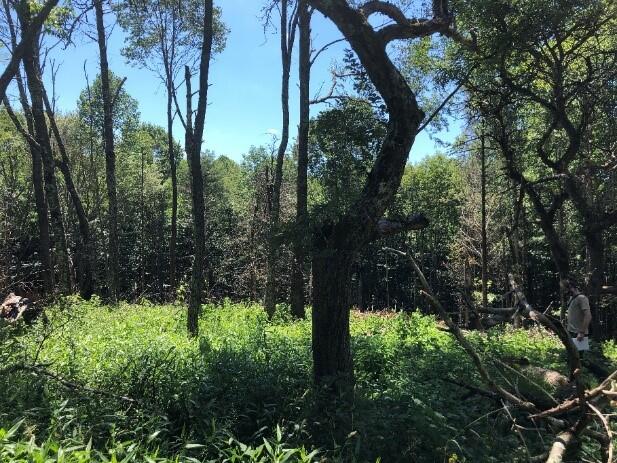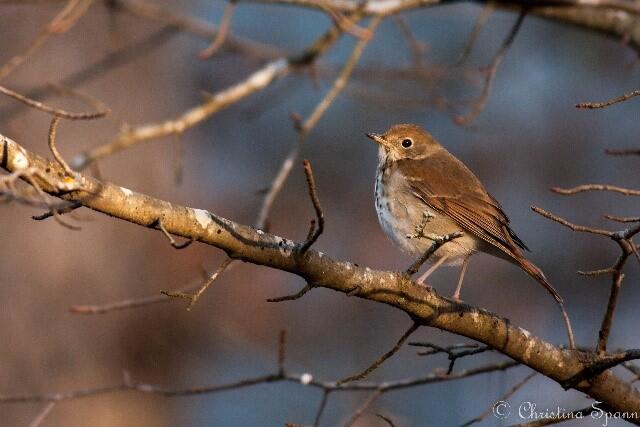
Janet Warner Montgomery has always taken care of her Ashe County property in ways that benefit wildlife, but this year she decided to make it official by creating a forest stewardship plan for her land, with help from Audubon and local foresters.
Montgomery made the decision after witnessing the mountain next to her home undergo heavy logging, a familiar sight in western North Carolina during times of economic hardship. But she knew there were better ways to sustainably harvest timber while also creating new habitat for birds.
As she considered ways to improve the ecological health of her property, Montgomery reached out to local forester Ian Anderson of Anderson Precision Forestry. Anderson contacted Audubon and our Forest Landbird Legacy Program (that’s me!), which helps foresters and many private landowners better manage their land for forest birds.
Approximately 80 percent of forested land in North Carolina is privately owned, by people like Montgomery. It’s important that we reach these landowners, giving them the tools they need to restore and improve the ecological health of their forests.
But research shows that only 18 percent of woodland owners (people who own more than 10 acres) have active forest stewardship plans for their property. Audubon’s Forest Landbird Legacy Program helps bridge this gap. The program now includes a network of more than 100 landowners responsible for nearly 30,000 acres of forested land in the state.

In Janet’s case, the program funded about half of the $14,000 cost of the conservation project. But just as importantly, I worked with Ian to survey the land and develop a forest stewardship plan.
We walked the fields and tree-covered hills of Janet’s property, surveying the birds and the landscape.
One of our first tasks was to find places in the forest that would benefit from creating new snags.
In the forestry world, a snag is a standing dead tree, and they are indispensable to birds. Snags provide cavities for nesting birds. Many species—such as Pileated Woodpeckers and White-breasted Nuthatches—build nests and raise young in the holes of dead trees. Other birds, like Black-and-white Warblers, specialize in gleaning insects from their trunks. Some bats, including Big Brown Bats and Silver-haired Bats, depend on the bark for roosting.

With less of the landscape in old growth forest, natural snags are typically the result of forest disturbance such as wind-throw, ice storms, or insect damage—which, all combined, don’t produce enough cavities for bird populations.
Every layer of the forest, from leaf litter to tree canopy, is important to multiple species of birds. But in a pine plantation, there is no undergrowth, which leaves few options for food or shelter.
The decision was made—the stand of white pines had to go. The question was how.
We agreed that we wanted to see the timber harvested and removed in ways that would be effective in mountainous terrain but would cause the least damage to the land. Fortunately, Anderson’s company specializes in low-impact cable logging, using a piece of forestry machinery called a yarder.
Yarders look like small cranes and are typically positioned away from a stand of trees being harvested. Once trees are cut down, they are transported along a cable to the yarder, so heavy machinery doesn’t have to plow through the forest or tear up steep hillsides.

Anderson teamed up with another forester, Ian Snider of Mountain Works Sustainable Development Inc., to come up with an innovative approach that mixed old and new methods of timber harvesting. The pair used horses to move logs a short distance, to a place where they could be attached to the cable and then flown with the yarder for the longer distances.
Despite all his years studying forestry, Anderson said he’s never heard of another instance where a horse and yarder have been combined. “We are hoping to find more projects to continue this yarder-horse combo to show how creative ideas can increase efficiency of low impact logging methods,” Anderson said. (Read more about the use of horse logging for bird habitat here and here.)
This is exactly the type of forest stewardship we like to see. I finally caught up with Ian and Janet on a hot July afternoon. Despite the midday heat, we saw and heard 20 species of birds as we walked through her woods.
Eastern Towhees and Hooded Warblers mingled with Cedar Waxwings and Hermit Thrushes, reflecting the high bird diversity Montgomery’s forest now attracts. I would not be surprised to find a Golden-winged Warbler here next spring.
By connecting this landowner with one of Audubon North Carolina’s Land Bird Stewards, Guy McGrane, we will continue to follow bird responses to this special forest restoration project for years to come.
Never underestimate that the power of one passionate landowner can make a big difference for birds.







